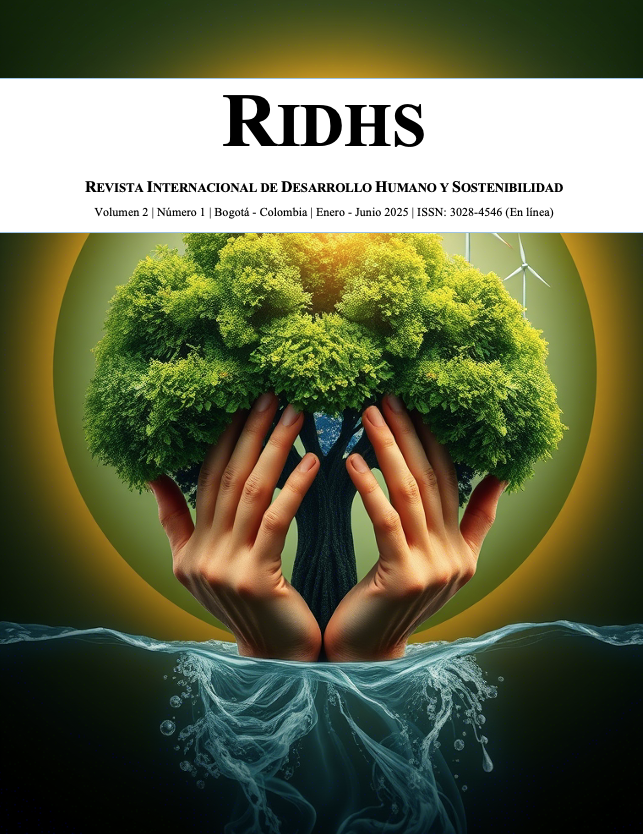The impact of selected variables on the unemployment rate in a given region
DOI:
https://doi.org/10.51660/ridhs21251Keywords:
unemployment rate, econometric analysis, statistical models, labour productivity, multiple regression, forecastingAbstract
Unemployment is a permanent element of the market economy that negatively affects the entire society. This research aims to analyze the impact of selected variables on the unemployment rate. The scope of the research covered the years 2009 to 2023, and their analysis was carried out using an econometric model, which allowed for the estimation of the impact of selected variables on the unemployment rate. The analysis showed that increasing the demographic burden and the number of people has a significant impact on reducing the unemployment rate. The values of the determination coefficient suggest that the model describes the unemployment phenomenon well. Although the time series showed a downward trend for the unemployment rate, the possible forecasting was burdened with too much error. The research results can contribute to a better understanding of the factors influencing the unemployment rate. Appropriate adjustment of educational programs related to the obtained results can contribute to reducing the unemployment rate and improving the situation in the local labour market.
Downloads
References
Budnikowski, T. (2009). Unemployment as a challenge of modern times (No. 83). Institute for Western Affairs.
Dąbrowski, M. (2016). Public investments in education for entrepreneurship. UB.
Florczak, W., & Przybyliński, M. (2016). Changes in the size and structure of the population and socio-economic development. Studia Ekonomiczne, 3(XC), 396–422.
Gersdorf, M., Raczkowski, M., & Wyziński, R. (2012). Employed and employers on the current labor market. LexisNexis.
Gładysz, B., & Mercik, J. (2007). Econometric modeling. PW.
Grodzicki, J. (2013). The role of human capital in the development of the global economy. UG.
Kozak, J. M. (2024). Convergence of the economic situation of households. University of Life Sciences.
Kozek, W. (2013). Labor market: Institutional perspective. WUW.
Kwiatkowski, E. (2007). Unemployment: Theoretical foundations. PWN.
Central Statistical Office. (2024). Local Data Bank.
Madras-Kobus, B., & Rogowski, J. (2013). Analysis of the results of the unemployment rate survey. UB.
Mikuła, E. (2006). Education and the interconnections: Economic growth/social inequality. In URz (pp. 191–207).
Nasiłowski, J., & Smolaga, L. (2016). The impact of labour productivity and technical progress on the level of economic development. In WSM (pp. 148–156).
Nowosielski, S. (2016). Goals in scientific research in the field of management. UE.
Organiściak-Krzykowska, A., & Hrynkiewicz, J. (Eds.). (2022). Depopulation in local terms. GUS.
Paluszkiewicz, M. (2023). The legal concept of the unemployed. UŁ.
Rozkruta, D., Dygaszewicza, J., & Szałtys, D. (Eds.). (2022). National Census of Population and Housing 2021. Central Statistical Office.
Sztanderska, U., & Socha, M. (2000). Structural bases of unemployment in Poland. WN.
Szydlik-Leszczyńska, A. (2012). Functioning of the contemporary labour market. Difin.
Wątroba, J. (2011). Linear regression analysis in practice. StatSoft Polska.
Wiśniewski, Z. (2012). Active labor market policy. In M. Maksim & Z. Wiśniewski (Eds.), Methods and tools for researching labor market policy (pp. 148–156). CRZL.
Wojdyło-Preisner, M. (2013). Determinants of long-term. UMK.
Downloads
Published
Issue
Section
License
Copyright (c) 2025 International Journal of Human Development and Sustainability

This work is licensed under a Creative Commons Attribution-NonCommercial-ShareAlike 4.0 International License.
Articles are published under the terms of a licence that permits use, distribution and reproduction in any medium, provided that the original work is properly cited. Ed&TIC retains the proprietary rights to the published works and actively promotes the reuse of these works under the terms of the aforementioned licence, which encourages the dissemination of knowledge and collaboration in the academic community.


